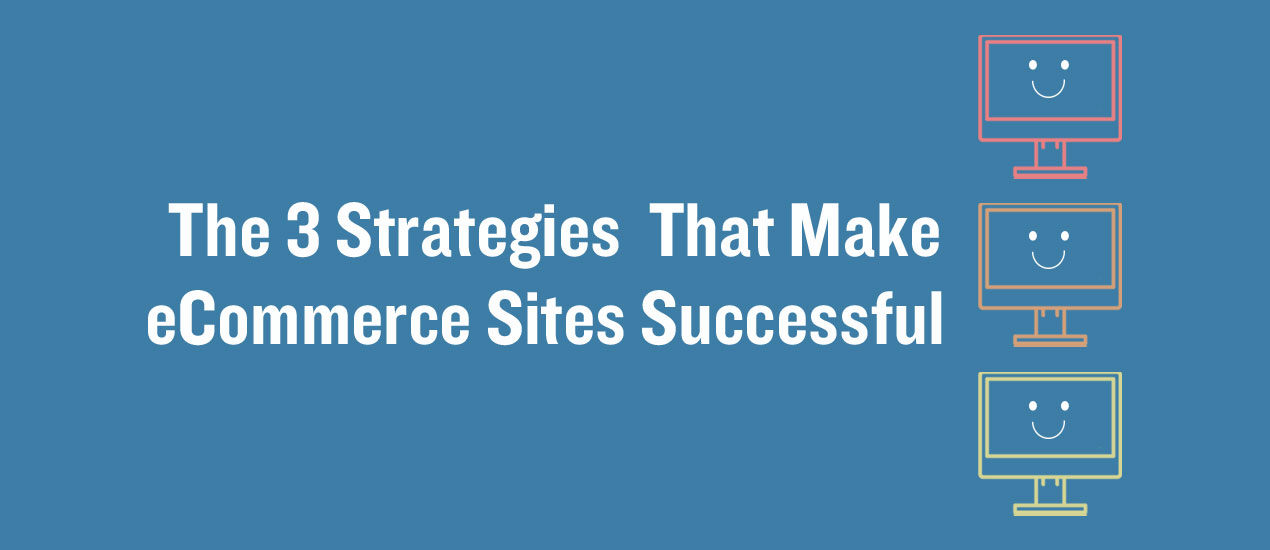Blog

The 3 Strategies That Make eCommerce Sites Successful
eCommerce websites are becoming more and more popular and prevalent by the day, creating a thriving and competitive market. Although the market is growing, the competition means that it can be difficult for new and existing eCommerce businesses to break through the barrier and get themselves seen and heard. Unfortunately, this can only inevitably lead those businesses to be pushed out of the market. We’ve put together 3 strategies that will make your eCommerce website stand out, and be successful. As with most businesses, time and effort are required, but it will certainly pay off in the long run.
1. Choose the right web host: First and foremost, you must ensure that you choose the right web host for your eCommerce site. There are many web hosting companies to choose from, all offering similar plans and features, but knowing which one is right for you can be difficult, especially if the thought hadn’t even crossed your mind! Here are a few things to consider when deciding on your web host:
- Uptime guarantee – Ensure that your web host has an uptime guarantee, or at least a very good uptime record if they can’t provide a guarantee. Providing your customers, as an eCommerce website, with a site that is available at all times is essential to maintaining a loyal user base, and encourages more traffic to your business’s website.
- Speed – It’s a well-known fact that website visitors are impatient; if your website doesn’t load within 3 seconds, your users and your conversion rate will rapidly decrease. If your web host’s servers aren’t up to scratch or don’t perform well, this could be a huge detriment to your eCommerce website.
- Features – Does your web host offer 1-click installs, such as WordPress, Shopping Carts, etc.? Getting the most for your money is obviously important when purchasing any product or service, but is especially true when choosing your web host. If you’re just starting out your eCommerce journey, you may be surprised at how easy it is to create a website with an online store, with integrated cart and payment facilities all from your web host.
Choosing the right web host is often not something that’s on the top of every eCommerce business’ list, but it really should be. If your website doesn’t load fast enough or isn’t visible to your users, how are you going to generate any business to ensure your eCommerce site is successful? If choosing a web host is a bit of a minefield, there are plenty of hosting reviews available and designed for you to make an informed decision.
2. Implement and update SEO: As we’ve already mentioned, the eCommerce market is rapidly growing and is very competitive, so implementing a solid SEO strategy and keeping on top of it is another high priority task to ensure your website is successful. SEO can be complicated, but there are lots of guides on the internet to help you get on your way.
One of the key things to remember is to keep your SEO updated; we can’t stress this enough. If your SEO is not updated, then your conversion rates will decrease, as well as traffic to your website, and potentially your customer base. Google’s SERP factors are constantly evolving, so your SEO strategy must evolve with it. What you thought was successful last year, may get penalized this year, so research is a must. If SEO is not your specialty, or you’re finding it too hard to keep on top of, don’t be afraid to reach out to others for help. There are plenty of SEO professionals available to take your eCommerce website to the next level, and are certainly worth investing in, even if it is to get your feet off the ground.
3. Optimise for Mobile: As of January 2017, Statista confirmed that 90% of Japan’s mobile phone users were using their phones to access the internet; with 87% in the U.K., and 73% in the U.S. Those figures are quite extraordinary, but they pack a punch, and shouldn’t be taken lightly. When over 70% of a country are using their mobile phones to browse websites, you’ll want to make sure that your eCommerce site is mobile optimized.
If your eCommerce site is not mobile friendly, you could be losing out on a huge customer base, and giving away potential users to your competition – don’t let that happen! Responsive website design doesn’t have to be difficult; in fact, most CMS providers, such as WordPress, have themes and templates at the ready with very little effort required from you. Once created, there are a range of tools available on the internet to confirm how well your eCommerce website is optimized for mobile, outlining areas for improvement if required.